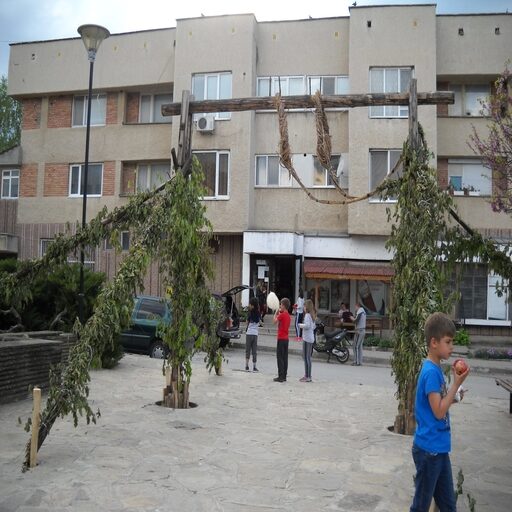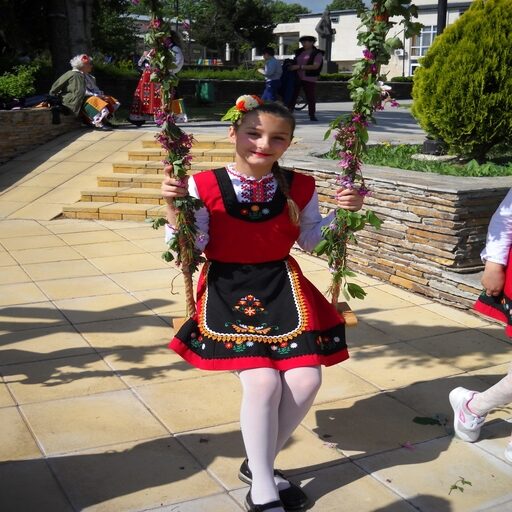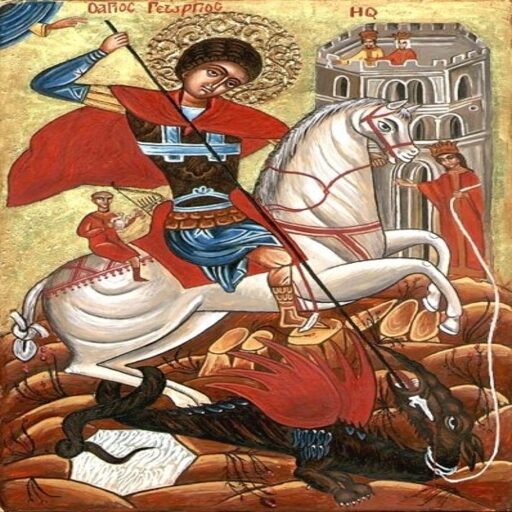SAINT GEORGE’S DAY
Celebration of May 6th- ”Gergiovden” (Гергьовден)
Tradition and Ritual
Bulgaria, May 6 is St. George’s Day, the patron saint of shepherds and their flocks as well as soldiers.
Guergiovden (Гергьовден), George’s Day, is one of the largest popular festivals and one of the most important saints in Bulgaria. Since 1999, this holiday has also been the celebration of the Bulgarian army, on this occasion, numerous military parades have been organized in several cities.
In Bulgaria and Preslav too, a swing is prepared and decorated with flowers and foliage that bring happiness and health. Everyone can go and sit on the “bridal swing”. This tradition made it possible to wish young boys and girls good health before their marriage! The tradition of the swing is unique to Bulgaria.
During this day, in Preslav, we saw traditional songs and dances from the different chitalisté groups for children and adults.
There are many songs that relate to this day in connection with the spring, the name of George, and taking care of the sheep. Many people are named Georges or declensions whether girls or boys (Georgi, Georges, Guérgana, Guénka, Guéntcho).
PROVERB…
When it rains on Saint George’s Day it brings good luck because it is good for the soil, vegetation, and gardens. The rain becomes like silver money because it fertilizes the Earth.



Foods
The meal on St. George’s Day is special and a family moment because we eat lamb cooked in the oven or roasted on a spit. Eating lamb is not insignificant in the Christian religion because the blood of the lamb represents the blood of Christ sacrificed for our salvation.
Lamb cooked in a hole, heated by embers, is an old method of cooking. It remains so for nearly 3 hours and is prepared with pepper, salt, and herbs. In some preparations, during cooking, the lamb keeps its skin in order to cook the flesh without burning it.

Who Was St. George?
Saint George is one of the emblematic figures of the Christian religion, a martyr, defender, and protector of the Christian faith. He is the Holy Parton of many States and Scouts.
Born under the Roman Empire in the 4th century BC in Cappadocia (Turkey), Georges de Lydda held a position of responsibility in the Roman army. He was promoted to the rank of prefect, acting as a link between the Roman authorities and the local population. His father had him baptized just after his birth, fearing for his son’s life. Emperor Diocletian asked to resume persecutions against Christians, destroy Christian churches, burn office books, and deprive Christians of their civil rights. In 303, George's position did not approve the orders of the Emperor, and was sentenced to death and then beheaded
He is mainly represented as a knight who defeats the dragon: an allegory of the victory of the Christian faith over evil and paganism. The figure of St. George is present on many national and military flags.

